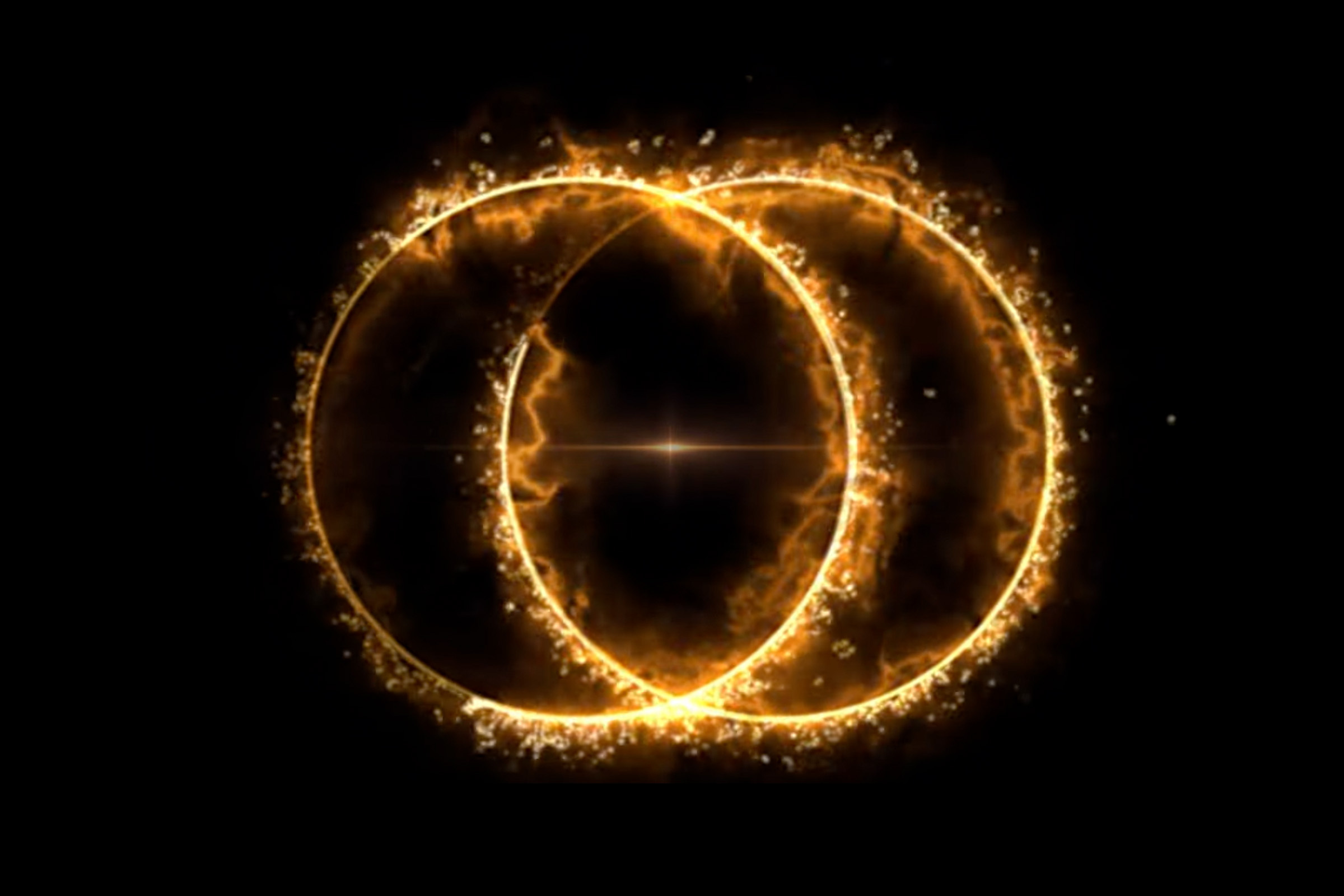Science
Astronomers Discover Enormous Twin Cosmic Rings Distant from Earth

Astronomers have made a remarkable discovery, uncovering a colossal double-ring structure located approximately 7.5 billion light years from Earth. This enormous formation, which spans hundreds of thousands of light years, emits striking signals in radio wavelengths. The findings, detailed in a study published in the Monthly Notices of the Royal Astronomical Society, introduce a new example of a rare cosmic phenomenon known as Odd Radio Circles (ORCs). Only a handful of these enigmatic structures have been identified since their discovery six years ago, making this latest observation particularly significant.
The newly identified ORC, designated as RAD J131346.9+500320, is only the second of its kind to exhibit a dual-ring configuration. ORCs are thought to consist of magnetized plasma and can only be observed through radio light. These structures often encircle a galaxy, with diameters that can exceed that of the Milky Way by dozens of times. Despite their impressive size, the origins of ORCs remain largely unexplained, raising intriguing questions among astronomers about their formation.
Ananda Hota, the lead author of the study and an assistant professor at the University of Mumbai, expressed excitement about the discovery. “ORCs are among the most bizarre and beautiful cosmic structures we’ve ever seen — and they may hold vital clues about how galaxies and black holes co-evolve,” Hota stated. The unique characteristics of the RAD J131346.9+500320 structure suggest it resides in a densely populated region of space, known as a galaxy cluster, where multiple galaxies are gravitationally bound together.
The positioning of the ORC within this galaxy cluster hints at the possibility that its formation is influenced by interactions between surrounding plasma and jets from supermassive black holes, which are found at the centers of galaxies. These jets are high-energy streams of particles that could have created the magnetized plasma clouds observed. According to Hota, a significant explosion near the galactic center could have re-energized these plasma clouds, resulting in the vibrant glow of the radio rings.
Coauthor Pratik Dabhade, an assistant professor in the astrophysics division at the National Centre For Nuclear Research in Warsaw, Poland, commented on the broader implications of this discovery. “These findings show that ORCs and radio rings are not isolated curiosities — they are part of a broader family of exotic plasma structures shaped by black hole jets, winds, and their environments,” he noted.
The discovery of ORCs contributes to an expanding understanding of what astronomers refer to as a “low-surface brightness universe.” This realm, once concealed from view, is being revealed by advanced radio telescopes. Other intriguing objects recently uncovered in this area include a perfectly round supernova remnant and short-lived, intensely burning stellar objects known as Wolf-Rayet stars.
As observations continue, astronomers are hopeful that further studies of ORCs will unravel more about these captivating cosmic structures and their role in the evolution of galaxies and black holes, paving the way for new insights into the universe’s history.
-

 Business1 week ago
Business1 week agoIconic Sand Dollar Social Club Listed for $3 Million in Folly Beach
-

 Politics1 week ago
Politics1 week agoAfghan Refugee Detained by ICE After Asylum Hearing in New York
-

 Health1 week ago
Health1 week agoPeptilogics Secures $78 Million to Combat Prosthetic Joint Infections
-

 Lifestyle1 week ago
Lifestyle1 week agoJump for Good: San Clemente Pier Fundraiser Allows Legal Leaps
-

 Science1 week ago
Science1 week agoResearchers Achieve Fastest Genome Sequencing in Under Four Hours
-

 Health1 week ago
Health1 week agoResearcher Uncovers Zika Virus Pathway to Placenta Using Nanotubes
-

 World1 week ago
World1 week agoUS Passport Ranks Drop Out of Top 10 for First Time Ever
-

 Science1 week ago
Science1 week agoMars Observed: Detailed Imaging Reveals Dust Avalanche Dynamics
-

 Entertainment1 week ago
Entertainment1 week agoJennifer Lopez Addresses A-Rod Split in Candid Interview
-

 Business1 week ago
Business1 week agoSan Jose High-Rise Faces Foreclosure Over $182.5 Million Loan
-

 Top Stories7 days ago
Top Stories7 days agoChicago Symphony Orchestra Dazzles with Berlioz Under Mäkelä
-

 World1 week ago
World1 week agoRegional Pilots’ Salaries Surge to Six Figures in 2025









